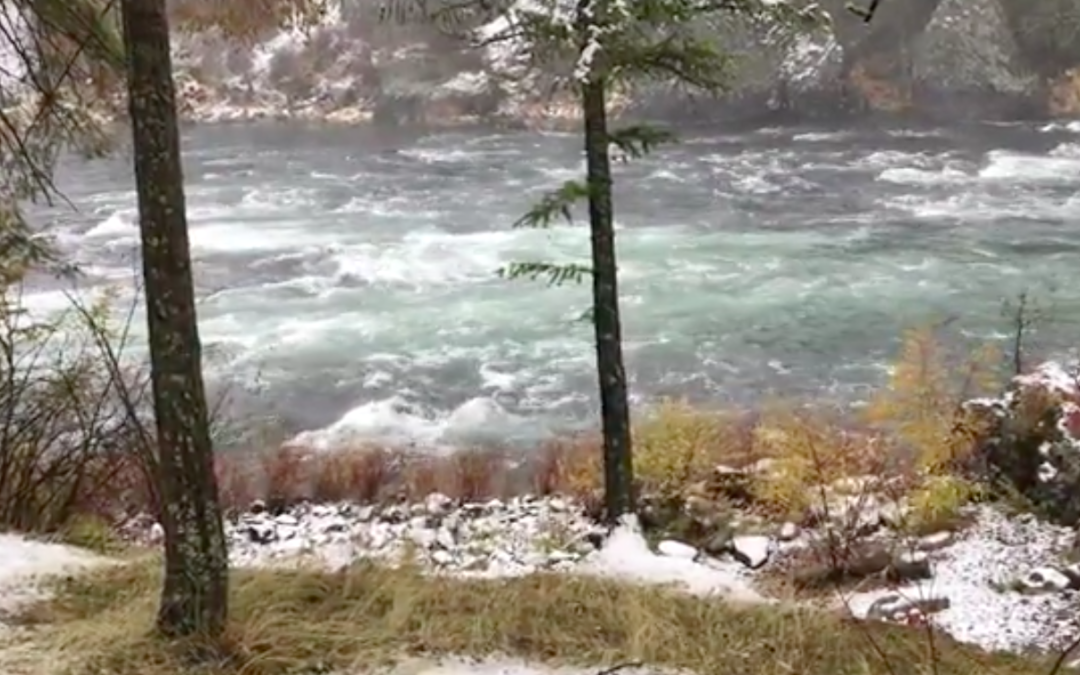As we approach the end of the quarter in History 373, I want to encourage you to reflect that some fine wilderness places are near at hand. You have heard about and perhaps taken art appreciation or music appreciation courses. The object in these is to enhance your ability to see (or hear), understand, and enjoy music and art. In a sense is what happens in History 373: In some ways, you can develop an vivid experience of places (familiar and new) while learning how others have interpreted nature through writing, film, and discussion posts. (Some of you have been commenting of this results in your posts and quiz-essays.) Case in point: I was camped beside the Spokane River in my RV two weeks ago, woke up in the snow, and took a walk. In the quiet of the forest with only the sound of the river in my ears my mind “flashed” back and forth between the rapids beside me and the cold river Hugh Glass “swam” in while fleeing from the Indians. Look closely and you can see Hugh Glass floating down the river past my campsite:
Oh, no. And there he is being swept through the Bowl and Pitcher! My point is that the wilderness, which we have been studying from so many angles is not simply an artifact in literature, history, and film — it is also a living presence. As well as going to Yellowstone and Yosemite and Walden Pond, we can find wildness in much more “modest” settings, such as that hawk in my back yard or those clouds over buildings in Spokane that I have described. Moreover, if we want to find it in more dramatic settings, Spokane abounds in splendid local wildness. This campground and the Bowl and Pitcher, for example, in Riverside State Park are just seven miles from downtown Spokane.

